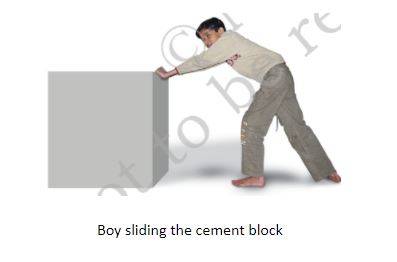
Vipra ShrivastavaSenior Manager - Content
What is Friction?
The fluid friction acts as the resistance between the relative motion of the surface, materials sliding against each other, and the layers of the fluids. It resists the motion acting between the surfaces.
Types of Friction
The types of friction are listed below:
- Dry friction – It resists the lateral motion between the connect of two surfaces.
- Fluid friction – It resists the relative motion between the layers of the fluid.
- Lubricated friction – It is a part of fluid friction, only the separation of two surfaces takes place with a lubricant fluid.
- Skin friction – The force that acts between the solid surfaces resist the motion of the fluid across the skin’s surface.
- Internal Friction – This force resists the motion of deformation.
What is Sliding Friction?
Sliding friction creates resistance between two objects sliding together. It is a part of kinetic friction and can be defined as the force acting between the two surfaces. It shows the relationship between the material of the object and the weight of the object. The change in the surface area does not change the sliding friction. In fact, the static friction is more than the sliding friction.
Examples of sliding friction include rubbing hands together, books sliding through the table, a deck of cards sliding against the table, a washing machine pushed against the floor, etc. The formula of sliding friction is given below:
Fs = us Fn
Here, the force of sliding friction is denoted as Fs
The coefficient of sliding friction is us
And the normal force is Fn
Factors Affecting Sliding friction
The factors that affect sliding friction are listed below:
- The surface of the objects
- Size and shape of the objects
- The amount of pressure on both the objects
- The speed of both the objects
- The formation of the surface of the objects
Sliding Friction for Class 11
The chapter 'Friction' holds a weightage of a significant 14 marks. The chapter is very important as per the new pattern of 2021. It includes 6 questions in total, consisting of two objective type questions, two very short questions, one short, and one long question.
Illustrated Examples of Sliding Friction
Example 1) Write the types of Kinetic Friction.
Answer – Kinetic friction is divided into three types:
- Sliding friction
- Rolling friction
- Fluid friction
Example 2) Write the formula used for sliding friction.
Answer – The formula of sliding friction is written below:
Fs = us Fn
Here, the force of sliding friction is denoted as Fs.
The coefficient of sliding friction is Us.
And the normal force is Fn.
Example 3) Write the types of Friction.
Answer – The types of friction are listed below:
- Dry friction
- Fluid friction
- Lubricated friction
- Skin friction
- Internal friction
Image Courtesy: NCERT
FAQs on Sliding Friction
Q: What do you mean by Sliding Friction?
Q: What are the factors that affect the Sliding Friction?
- The surface of the objects
- Size and shape of the objects
- The amount of pressure on both the objects
- The speed of both the objects
- The formation of the surface of the objects
Q: What is the unit of coefficient of friction?
Q: What are the examples of Sliding Friction?
Q: What do you mean by Fluid Friction?
News & Updates
Physics Laws of Motion Exam
Student Forum
Popular Courses After 12th
Exams: BHU UET | KUK Entrance Exam | JMI Entrance Exam
Bachelor of Design in Animation (BDes)
Exams: UCEED | NIFT Entrance Exam | NID Entrance Exam
BA LLB (Bachelor of Arts + Bachelor of Laws)
Exams: CLAT | AILET | LSAT India
Bachelor of Journalism & Mass Communication (BJMC)
Exams: LUACMAT | SRMHCAT | GD Goenka Test
